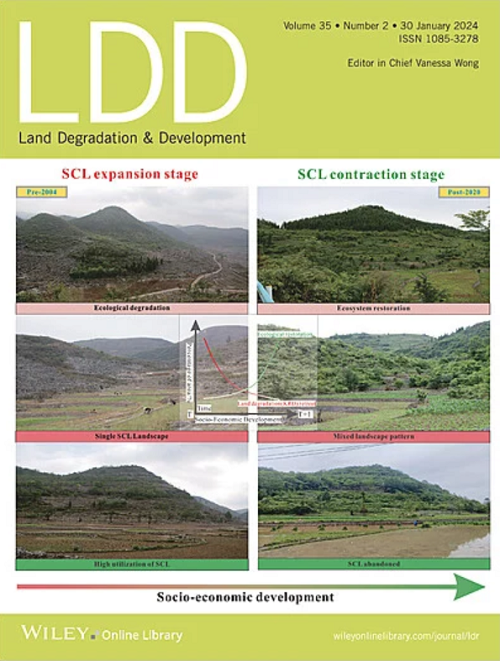Evaluation and Tradeoff‐Synergy Analysis of Ecosystem Services in an Ecologically Vulnerable Region in the Northern China
IF 3.6
2区 农林科学
Q2 ENVIRONMENTAL SCIENCES
引用次数: 0
Abstract
The Northern Hebei Province (NHB) in Northern China serves as a crucial geographical barrier for ensuring the ecological security of the mega city‐group of Beijing –Tianjin‐Hebei. Due to rapid urbanization and anthropogenic afforestation, the NHB is confronted with a significant challenge in coordinating the preservation of ecosystem services (ESs) and socio‐economic development. Consequently, understanding the impacts of these human disturbances on ESs is essential for future decision‐making in ecological management and optimal provisions of ESs. The Integrated Valuation of Ecosystem Services and Trade‐offs Tools (InVEST) model was used for evaluating the long‐term trends of five key ESs in the NHB, namely carbon storage (CS), habitat quality (HQ), water yield (WY), net primary productivity (NPP) and food production (FP). Further, the trade‐offs/synergy of these five ESs were analyzed, with ESs bundles identified. The main conclusions are as follows: (1) From 1996 to 2020, the impervious surface (+122.84%), barren (+169.74%), forest (+19.8%) and shrub (+49.03%) were increased; waters (−39%), cropland (−20.22%) and grassland (−6.14%) were decreased. (2) HQ, CS, and WY decreased by −5.68%, −10.69% and − 20.55%, respectively, while the other ESs increased (NPP by 115.09%, FP by 137.14%). Increases in the forest area improved multiple ESs but reduced WY. Increases in the barren significantly reduced ESs but enhanced land use efficiency. (3) Five pairs of ESs showed synergies, and another five pairs of ESs showed trade‐offs. The trade‐offs between the three pairs of ESs (CS‐WY, FP‐WY, and FP‐NPP) were strengthened, while the synergies between the other ESs were enhanced. (4) The ecologically fragile bundle decreased by 19.44% at the county level and by 83.89% at the pixel level. As evidenced by the ES bundles at the two levels, there are distinct goals for ESs management at different levels. ESs planning and management should be based on ESs bundles at two spatial levels, which can provide the necessary information to support the sustainable development of regional ecosystems.求助全文
约1分钟内获得全文
求助全文
来源期刊

Land Degradation & Development
农林科学-环境科学
CiteScore
7.70
自引率
8.50%
发文量
379
审稿时长
5.5 months
期刊介绍:
Land Degradation & Development is an international journal which seeks to promote rational study of the recognition, monitoring, control and rehabilitation of degradation in terrestrial environments. The journal focuses on:
- what land degradation is;
- what causes land degradation;
- the impacts of land degradation
- the scale of land degradation;
- the history, current status or future trends of land degradation;
- avoidance, mitigation and control of land degradation;
- remedial actions to rehabilitate or restore degraded land;
- sustainable land management.
 求助内容:
求助内容: 应助结果提醒方式:
应助结果提醒方式:


